
 |
 |
 |
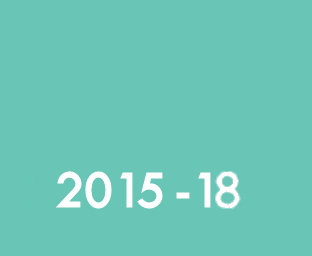 |
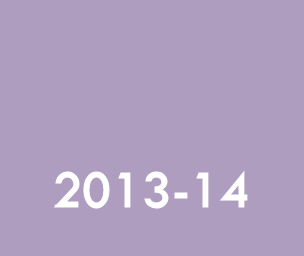 |
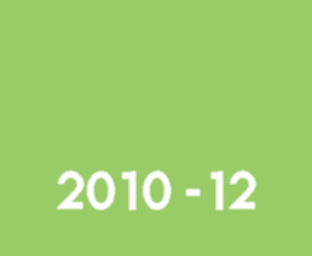 |
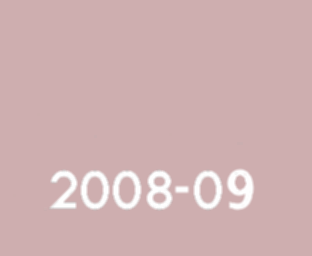 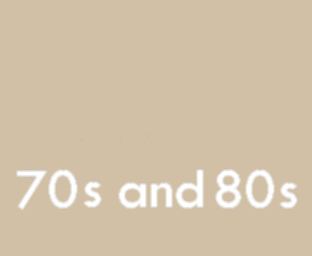  |
|
My Paintings by Wolfgang Hock My paintings are made from visual imaginations and memories using mostly self-made photos, but also photos from others, collected pictures and drawings as templates. Scenes of personal life and from the journeys between my two worlds, America and Europe, are the point of departure. I speak about "my two worlds" because I was born and grew up in one (in the wonderful city of Bamberg in West-Germany with its restricting catholic narrow-mindedness down to the present day) and in the other one I lived from 1993 to 2011 in four big cities (Salvador, Rio de Janeiro, Curitiba and from 2002 in Fortaleza). Traveling has been important part of my life since childhood. Already at school (early 70’s) we – my friends and me - scraped our monthly money together to went by train through the Alps (Brenner) to visit Venice and Florence. In the Easter, Pentecost and summer holydays, as soon as possible. That was the great experience for us! Staying in Venice itself up to six weeks was at that time still possible. Today not imaginable any more, too expensive and horribly overcrowded. Especially Venice was something like an alternative life for us: Without any cars, the Italian way of life more easygoing together with the internationality of the visitors from all around the world, everything only past, not a modern building, winding alleyways and then suddenly wide open places, the many canals and bridges, without any stress, and always the overwhelming beauty together with odd, almost surreal morbidity - everything very different from any other normal city. You could sit down at any place near a well and for hours simply look, philosophize, discuss, draw, photograph, paint, or simply make rubbish, the whole day, without any trouble, sometimes until dawn. Only the street cleaners threw our painting trials in the trash, when we didn’t pay attention. What a profanity ! At that time we also bought for the first time ‘real’ oil paints and started painting ‘seriously’, on the Guidecca island near by Il Redentore church. We began also to discover for us the painted images at museums and art exhibitions: The Accademia in Venice and of course the Galleria degli Uffici in Florence and many other museums and the contemporary art at the Biennale in 1976 with its pavilions of different countries. For days we remained in front of the originals and discussed the “extended art conception”, new city planning, painting and everything what was to see. We felt different, but at the same time threatened by that what would come. Our slogan was: “Incapable of society, incapable of working and incapable of living”. But with this we felt absolutely free and independent of all oppression which were over us. Before this, the photographing in black and white and the filming with Super 8 has been becoming very important for me, too. Especially the filming was something unimaginable new for me, the Bealieu camera, the big heavy tripod by Linhof, the cutting and editing of the films with the hand display unit and the sound recording. From home I should become a doctor because my parents both are doctors (neurologist/psychiatrist and dentist). So from school I was put in this direction, too. But I didn’t get the “nummerus clausus” for medicine because I learned too little for school and used every single minute for painting, photographing and filming.
Interpretation instead of illustration I understand my paintings like a “translation” of reality to image form, comparable with a translation from one language to another. Such a translation you can do in many different ways, standing always between two opposite positions: Either the translation is “literal” that means, it is made word by word or it is “free” and consider the original meaning and the characteristic feature of the new language. A literal translation tends always to be heavy, bumpy, crabbed, dull and frequently wrong and is inferior to the original. Very different the free translation, which can excel the original in clarity, beauty and expression. You cannot copy literally the reality with its three dimensions onto a media with two dimensions, for this reason a literal translation remains always a tried copy in vain, you can compare with “illustration”, a free one with “interpretation”. Who translates literally tries only to imitate the original. However somebody who translates free, tries first to understand the sense and then keeps this sense and character of the original, even if this makes necessary a totally change of presentation form. This applies to all fields, also to literature, photography and painting for example.
The painting process Of hundreds of sketches and photos, I select one or several ones as a model for my painting. My process of painting, I see like a unity divided in two stages: In the first one, I work out long the models in the computer. The computer has become a useful tool in this area, too. Photoshop is a computer tool for picture making. The possibilities are almost unlimited, rather you have to take care not to get lost in the variety of picture manipulations. It is a misconception by many people that this relatively new technology stands on opposite side to art. On the contrary, it can enrich art infinitely, if you try to discover, experiment and apply its enormous possibilities seriously. For this there are no ready recipes, no manual instructions, no automatically pre-programmed courses of action, this needs time and makes o lot of work. The computer is o tool comparable with a knife, very useful for the human and at the same time able to kill. Can we imagine living without knives ? Can we hold the computers responsible for the badness of our age ? (see: artificial intelligence) As a long time ago, before the official invention of photography in the nineteenth century up to deep twentieth century, many art scientists and art critics have been treating the use of projected lens-based images with ignorance and rejection, so it happens today again with the computers for image making. For me misunderstood, not thought out. This comes from a late -19th-century view of the artist as a solitary genius with divine vision, an old-fashioned romantic view, not realizing how difficult optics are to use and that the skills of the eye and hand are essential. I cannot take this attitude with any seriousness. The work with the models in the computer is a great challenge and expansion of optical manipulation possibilities, what makes possible the free rendering in painting in the second stage. In the second stage, I render the worked out digital model to painting using it as source of inspiration. This is a fascinating process, making the painting perceptible only optically as free image structures of light, color, line, surface, space, concentration, movement and composition. In the meaning of free translation, I try to accentuate with spontaneous brush strokes sketchiness avoiding an elaboration too much orientated at the model, consciously to leave standing the process of painting in its materiality. For this, I develop always new forms and techniques of painting which adept themselves to these objectives. On the one hand the certain painting doesn’t deny its model, refer to that an image medium was worked in, on the other hand the developing painting claims during the painting process its own medium conditions making the model decreasingly important. By the transformation against the determined image logic of the photographic lens image, comes forward the painting on the surface as a new, invented consistent and transparent reality.
The power of image The main problem today seems to me in this context that the projected lens-based image of photography with its apparent three dimensions dominates absolutely our optical reality (24-hour TV, home video, giant photo-video-advertisement at skyscrapers, digital cinema, internet, glossy magazines etc.) and because of this people again – or still – get confused: They confound it with reality, for them is that on their giant plasma screen more real than reality itself, they accept that way of seeing as real, but they don’t realize the medium exposing them to a daily brainwashing that their ‘image of reality’ is not any more their own. Photography, video, film and television are regarded as real. This is the problem because the world doesn’t look like a photograph, regardless of which photography we are talking about: analog or digital. Each time the respective media changes the image in different way (many people think that before they had been more beautiful, but this comes from the new digital photography which represents different). The more giant the screen, the 3-D-effect, the definition of the image, the optical perfection, the more veracity and truth is supposed, the more people belief that this is reality itself what you can see there. They are overrun literally by the permanent technical innovations without any chance to process them emotionally. The fascination of the always newer and better drives on this confusion. This all are automatic and unconscious processes not realized by the majority. This has to do with influence, power, politics and control. The visual manipulation of mass has been always stronger than by other medium (the word e.g.). This narrowing on one point of vision of things, I feel like very brutal and inhuman, like a prison. Forcing awareness is worse than killing a human cruelly. The denying of your own way of seeing destroys the soul.(*) Especially authoritarian systems know very well to use this for their aims. The church had been using it more than one millennium very successfully (even though it talks always about the power of word …). Even in the communist China at the time of Mao until today, the western lens-based image of photography is the dominant medium, not the highly sophisticated traditional Chinese painting without our vision with one vanishing point (the Mao-bible was known because of its red color, nobody really read it …). But in our western culture of today happens this same way: in the commercial area optically perfect images serve as ‘proofs’ of its veracity and quality. Even in popular scientific area are used those methods. As well our former president Lula in Brazil was very interested in the digital television (Japanese standard) for all Brazilians free of cost during his mandate to make happy really everybody, until the last territories of the Amazon region and the poorest areas of the favelas like e.g. the “Morro do Alemão” in Rio de Janeiro. The poor are simply more numerous than the rich… That’s the reason why my last aspect of “transformation against the determined image logic of the lens image of photography” is especially important in my pictures, as well as to make aware the rendering of three dimensional reality in a medium of two dimensions, to unmask the confusion between medium and reality. An old issue, but still explosive, especially now again in our digital age. Innovative art is always there where you are not expecting it, there where nobody is thinking of it, nobody is calling its name. It hates being recognized and welcomed by its name. It immediately buzzes off. It is like a person who loves the incognito keenly. When discovered, when someone point a finger at it, it escapes. Because it doesn’t look like art, it deceives you. Many deceive themselves.(*) It’s hard to swim against the current and nevertheless using the new technology. The magnetization by the habits exerts a very high pressure. The established and accustomed templates are so prepossessing that’s hard to find someone resisting them. A certain “madness” is necessary. New technology in arts as instrument of awareness, not of naïve admiration of technical perfection.
New medium: Computer painting - Transparency and immateriality The most who use photos for painting do this that pictures look like photography, i.e. they want to imitate the “realism” to fake something what they don’t know how to do. Exactly this I don’t do. The use of computers with Photoshop is intended to polish photographs, and the consequence is those dreary magazines and TV programs where everybody and everything looks the same. If somebody looks at those pictures in twenty year’s time, he won’t see anything more. They will tell him something about our shallow age only. These all are dead ends necessary to stem them. One new technique is the painting and drawing by hand directly in the computer and in a second step, the print on paper or canvas. The machines have improved, it now enables one to work freely and fast with colors and lines. In this way, you don’t paint anymore on real paper or real canvas, you paint on virtual paper in the computer. It’s not the point to feign, imitate or to reproduce other mediums or materials (e.g. oil or watercolor painting), but to explore and practice the peculiarity of the new medium. In doing so you meet with advantages and disadvantages to anything new in mediums. One important advantage is the speed swapping brushes, adjusting and drying (here is no drying) what aids the intuitive and spontaneous contact with the paintings. Speed here in a positive sense, not like nervous trying around. As foretold above that needs time, highest concentration, makes o lot of work and like any traditional art medium requires great skill. For certain things this medium is simply perfect. You can work very subtly with transparent color layers. You can compare this new technique with traditional etching: The worked out copper plate is the virtually created image in the computer of which you make, after a lot of state proofs, original prints in a certain edition. So they are not reproductions. For me, this is an important expansion, but doesn’t mean to lose sight of the traditional mediums like oil or watercolor painting. Quite the contrary: Things developed in the new mediums fecund the work with oil painting and vice versa. The creative possibilities broaden all mediums and for me it is a surprise again and again what is coming out of it. Absolutely fascinating.
Freedom The reader of these lines may have realized the word “free” appearing many times in the text accentuating especially the importance of the idea of “freedom”, today - especially after 2001 - frequently not seen any more in its entire meaning. I am in favor of a cosmopolitan position considering the whole globe as home, looking upon the term of “nationality” as absolutely antiquated and backwardly, standing up for open borders and free mobility together with the right to free access to knowledge, communication and cultural assets, and on the other side battling against any kind of repression and intolerance, peer pressure and religious restriction.
ALL IMAGES AND SITE CONTENT © WOLFGANG HOCK |
||||||